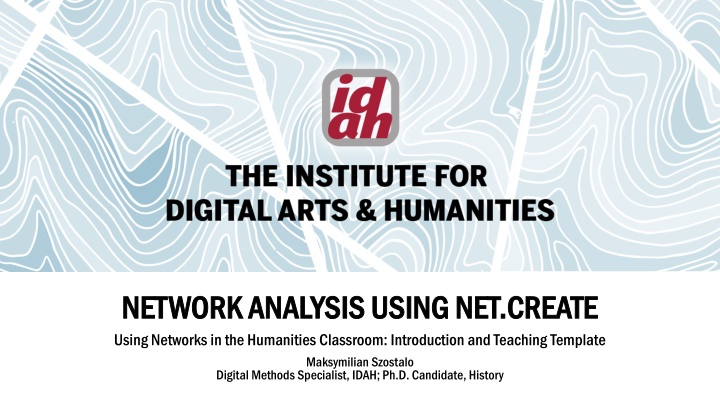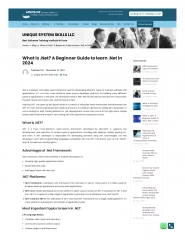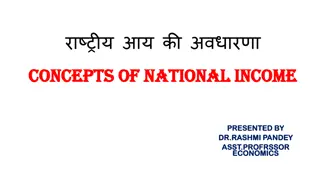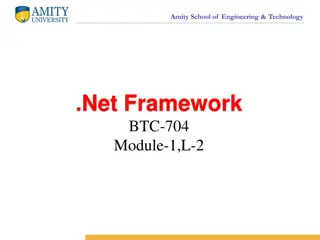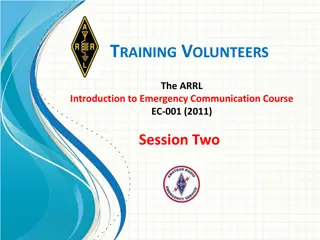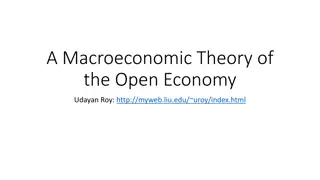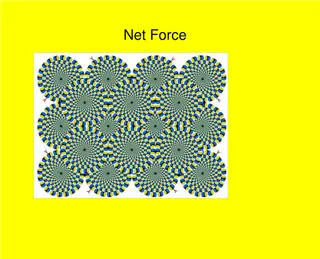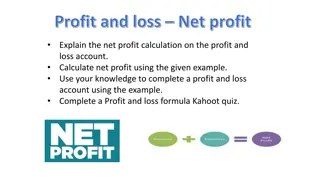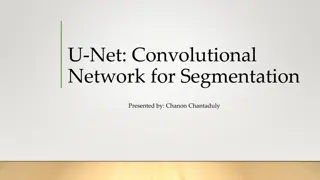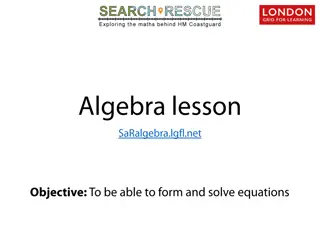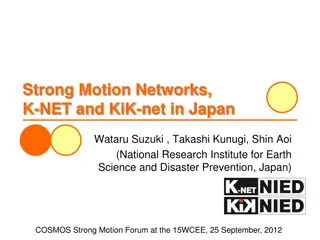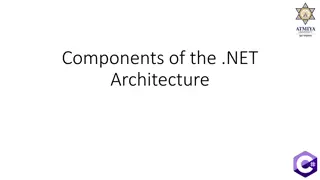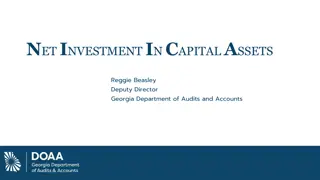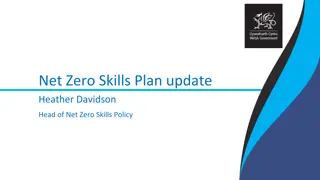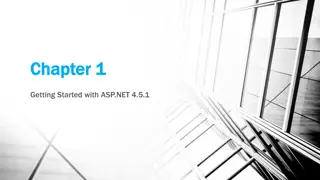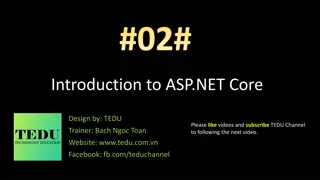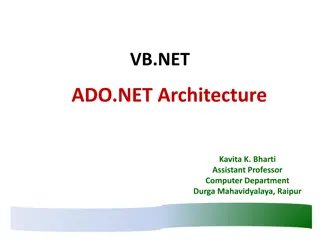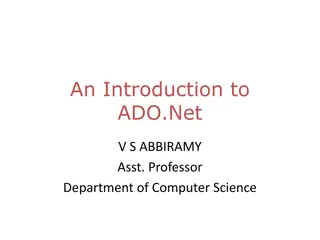Introduction to Network Analysis Using .NET
This presentation introduces the concept of network analysis using .NET in the humanities classroom. It provides a template for teaching and adapting network analysis tools for educational purposes. The guide explains the relevance of networks in processing and visualizing data, emphasizing the collaborative nature of network analysis among students. It discusses the historical framework created by students collaborating to build a network based on data from artifacts showing complex social interactions.
Download Presentation

Please find below an Image/Link to download the presentation.
The content on the website is provided AS IS for your information and personal use only. It may not be sold, licensed, or shared on other websites without obtaining consent from the author.If you encounter any issues during the download, it is possible that the publisher has removed the file from their server.
You are allowed to download the files provided on this website for personal or commercial use, subject to the condition that they are used lawfully. All files are the property of their respective owners.
The content on the website is provided AS IS for your information and personal use only. It may not be sold, licensed, or shared on other websites without obtaining consent from the author.
E N D
Presentation Transcript
NETWORK ANALYSIS USING NET.CREATE NETWORK ANALYSIS USING NET.CREATE Using Networks in the Humanities Classroom: Introduction and Teaching Template MaksymilianSzostalo Digital Methods Specialist, IDAH; Ph.D. Candidate, History
ABOUT THIS GUIDE This slide deck will assist you in adapting Net.Createfor use in your course, either as a two-day activity introducing students to social network analysis or as a semester-long project You can adapt this workflow into any undergraduate course that examines an artifact (or multiple artifacts) that reveal the presence of complex social interactions among a number of people This slide deck mixes Instructor Slides (#5, 8-17) with slides you can insert into a student-facing slide deck for your class Click herefor the instructional guide that supplements this slide deck To schedule a Net.Createconsultation and/or for access to and help setting up the Net.Createtool, contact IDAH (idah@indiana.edu) We will provide you with additional slides explaining the interface to students with specific login information for you and your students
WHY NETWORKS? Each year, we double the sum total of data produced throughout history Each year, we double the sum total of data produced throughout history Sifting through the noise to find desired data has grown as a valued skill Sifting through the noise to find desired data has grown as a valued skill Scholars have acquired a disciplinary framework to contextualize new data Scholars have acquired a disciplinary framework to contextualize new data Students need help to see how a small part they study fits into a larger whole Students need help to see how a small part they study fits into a larger whole Network analysis allows students to process data into a shared visualization Network analysis allows students to process data into a shared visualization Each group of students works on a different part but contributes to the whole Each group of students works on a different part but contributes to the whole
A NETWORK = A HISTORICAL FRAMEWORK Group notes a significant detail The total depth of a network built by the whole class One group s total entries from a short excerpt adds to the larger framework
NETWORK GRAPHS FROM PREVIOUS CLASSES Plague in Honolulu, Hawaii, 1900 1901 https://dighist.indiana.edu/networks/?dataset=2020_PlagueAndFire#/ Early Roman Imperial History https://netcreate.org/networks/ Features one original network made by students and quick modifications we made to show Gender distinctions Factions
NETWORK ANALYSIS PRIMARY VOCAB NODE NODE: A still subject or object One person, or group, or institution, or place, or Something that needs no movement to exist Connect to one another through relationships EDGE EDGE: a mobile relationship An action verb describing the connection between the nodes you are considering An inter-action that notes how one of the nodes moves to act in a way that affects another node EGO EGO: your shifting focus in the network The node you re interested in The connections that node possesses Node Node Ego Ego King George III Edge Edge
NETWORK ANALYSIS SECONDARY VOCAB NODE NODE: A still subject or object One person, or group, or institution, or place, or Something that needs no movement to exist Connect to one another through relationships EDGE EDGE: a mobile relationship An action verb describing the connection between the nodes you are considering An inter-action that notes how one of the nodes moves to act in a way that affects another node EGO EGO: your shifting focus in the network The node you re interested in The connections that node possesses ? ? High edge High edge weight weight King George III King George III ? ? High High- -degree degree node node
WHY NETWORK ANALYSIS? Explore and analyze connections Explore and analyze connections You suddenly see clusters of relating nodes clusters of relating nodes Pick out the outliers outliers, the lone wolves, and ask why are they like that in the network? Visualize connections Visualize connections Reconcile the limits of human pattern- matching We can keep about 7 pieces of info in short- term memory (Actual number at any moment is about 3 to about 9) with the size of your source corpus Ponder the gaps in the source(s) you re examining King George III King George III
THE DECLARATION OF INDEPENDENCE Research Question: Try 1: How can I visualize the Declaration of Independence as a network graph? Problem? That s very broad What belongs in a network graph? What you want to emphasize that s important from the source(s) Try 2: What concrete events happen in the Declaration of Independence? Looking more deeply into even (seemingly) familiar texts can give students an appreciation for the depth of scholarly work, the mental processing involved, and remove the fear of not knowing how to tackle something big Most students will know something about the preamble, some might remember reciting it Most will know what the signatures at the end do But few can discuss the document as a whole and how the parts fit Students will look at a text they think they know and see how a close reading updates that awareness an ability they can export beyond class
WHAT NODES? WHAT EDGES? The unanimous Declaration of the thirteen united States of The unanimous Declaration of the thirteen united States of America, America, When in the Course of human events, it becomes necessary for one people to dissolve the political bands which have connected them with another, and to assume among the powers of the earth, the separate and equal station to which the Laws of Nature and of Nature's God entitle them, a decent respect to the opinions of mankind requires that they should declare the causes which impel them to the separation. We hold these truths to be self-evident, that all men are created equal, that they are endowed by their Creator with certain unalienable Rights, that among these are Life, Liberty and the pursuit of Happiness. --That to secure these rights, Governments are instituted among Men, deriving their just powers from the consent of the governed, --That whenever any Form of Government becomes destructive of these ends, it is the Right of the People to alter or to abolish it, and to institute new Government, laying its foundation on such principles and organizing its powers in such form, as to them shall seem most likely to effect their Safety and Happiness. Prudence, indeed, will dictate that Governments long established should not be changed for light and transient causes; and accordingly all experience hath shewn, that mankind are more disposed to suffer, while evils are sufferable, than to right themselves by abolishing the forms to which they are accustomed. But when a long train of abuses and usurpations, pursuing invariably the same Object evinces a design to reduce them under absolute Despotism, it is their right, it is their duty, to throw off such Government, and to provide new Guards for their future security. --Such has been the patient sufferance of these Colonies; and such is now the necessity which constrains them to alter their former Systems of Government. The history of the present King of Great Britain is a history of repeated injuries and usurpations, all having in direct object the establishment of an absolute Tyranny over these States. To prove this, let Facts be submitted to a candid world.
THE CONCRETE VS THE ABSTRACT The unanimous Declaration of The unanimous Declaration of the thirteen united States of America America, , When in the Course of human events, it becomes necessary for one people to dissolve the political bands which have connected them with another, and to assume among the powers of the earth, the separate and equal station to which the Laws of Nature and of Nature's God entitle them, a decent respect to the opinions of mankind requires that they should declare the causes which impel them to the separation. We hold these truths to be self-evident, that all men are created equal, that they are endowed by their Creator with certain unalienable Rights, that among these are Life, Liberty and the pursuit of Happiness. --That to secure these rights, Governments are instituted among Men, deriving their just powers from the consent of the governed, --That whenever any Form of Government becomes destructive of these ends, it is the Right of the People to alter or to abolish it, and to institute new Government, laying its foundation on such principles and organizing the thirteen united States of its powers in such form, as to them shall seem most likely to effect their Safety and Happiness. Prudence, indeed, will dictate that Governments long established should not be changed for light and transient causes; and accordingly all experience hath shewn, that mankind are more disposed to suffer, while evils are sufferable, than to right themselves by abolishing the forms to which they are accustomed. But when a long train of abuses and usurpations, pursuing invariably the same Object evinces a design to reduce them under absolute Despotism, it is their right, it is their duty, to throw off such Government, and to provide new Guards for their future security. --Such has been the patient sufferance of these Colonies; and such is now the necessity which constrains them to alter their former Systems of Government. The history of the present King of Great Britain is a history of repeated injuries and usurpations, all having in direct object the establishment of an absolute Tyranny over these States. To prove this, let Facts be submitted to a candid world.
NOT MUCH HAPPENS IN THE FIRST PART! Much of the language is theoretical and abstract We encounter very few actors and as of yet no actual actions done by one well defined party to another That s all perfectly fine. It opens some discussion topics: Why is the language so ponderously abstract? One answer: no one had ever done something like this (a declared revolution) before What s the abstraction setting up? General answer: portions quite concrete
THE DECLARATIONS LITANY OF ABUSES To prove this, let Facts be submitted to a candid world. He has refused his Assent to Laws, the most wholesome and necessary for the public good. He has forbidden his Governors to pass Laws of immediate and pressing importance, unless suspended in their operation till his Assent should be obtained; and when so suspended, he has utterly neglected to attend to them. He has refused to pass other Laws for the accommodation of large districts of people, unless those people would relinquish the right of Representation in the Legislature, a right inestimable to them and formidable to tyrants only. He has combined with others to subject us to a jurisdiction foreign to our constitution, and unacknowledged by our laws; giving his Assent to their Acts of pretended Legislation: For Quartering large bodies of armed troops among us: For protecting them, by a mock Trial, from punishment for any Murders which they should commit on the Inhabitants of these States: For cutting off our Trade with all parts of the world: For imposing Taxes on us without our Consent: Determining Nodes and Edges in the Middle Section The Concrete Actors the Nodes He the present King of England: George III [person] Us the thirteen United States of America [institution] The remainder can be boiled down to Edges George III has hurt the nascent USA George III has helped the USA Can you find one such? Oops. No. What does that communicate about the document s purpose? Gaps like these allow you to step in with disciplinary knowledge and expertise and develop that in your students
THE CONCRETE ACTIONS AT THE CLOSE In every stage of these Oppressions We have Petitioned for Redress in the most humble terms: Our repeated Petitions have been answered only by repeated injury. A Prince whose character is thus marked by every act which may define a Tyrant, is unfit to be the ruler of a free people. Nor have We been wanting in attentions to our Brittish brethren. We have warned them from time to time of attempts by their legislature to extend an unwarrantable jurisdiction over us. We have reminded them of the circumstances of our emigration and settlement here. We have appealed to their native justice and magnanimity, and we have conjured them by the ties of our common kindred to disavow these usurpations, which, would inevitably interrupt our connections and correspondence. They too have been deaf to the voice of justice and of consanguinity. We must, therefore, acquiesce in the necessity, which denounces our Separation, and hold them, as we hold the rest of mankind, Enemies in War, in Peace Friends. We, therefore, the Representatives of the united States of America, in General Congress, Assembled, appealing to the Supreme Judge of the world for the rectitude of our intentions, do, in the Name, and by Authority of the good People of these Colonies, solemnly publish and declare, That these United Colonies are, and of Right ought to be Free and Independent States; that they are Absolved from all Allegiance to the British Crown, and that all political connection between them and the State of Great Britain, is and ought to be totally dissolved; and that as Free and Independent States, they have full Power to levy War, conclude Peace, contract Alliances, establish Commerce, and to do all other Acts and Things which Independent States may of right do. And for the support of this Declaration, with a firm reliance on the protection of divine Providence, we mutually pledge to each other our Lives, our Fortunes and our sacred Honor. [the Signatures follow]
DETERMINING EDGE TYPES There are multiple sets of options, each of which will affect how the network graph appears You can choose one set now, see how it does in the classroom, and modify that in a future iteration One sample set George III dominates the thirteen United States The thirteen United States reject George III The representatives mutually benefit one another
HOW THIS NETWORK WOULD LOOK Signer 1 Signer 1 State 1/13 State 1/13 Signer 2 Signer 2 King George III King George III Continental Continental Congress / Congress / The thirteen The thirteen United States United States State 2/13 State 2/13 State 3/13 State 3/13 Signer 2 Signer 2 Signer 1 Signer 1
MOST NETWORKS WILL LOOK DIFFERENT The example we chose here deliberately shows only the concrete core of an abstract document We portray only concrete actors to show what s actually going on ...to help students see what great effort of persuasion occurs in the remainder and structure of this extraordinary document This forces students to paraphrase and restate the text based on the edge types selected for inclusion; for example: For protecting them [quartered armed troops], by a mock Trial, from punishment for any Murders which they should commit on the Inhabitants of these States: King George mutually benefits armed troops In a description field, students can explain their reasoning, especially if the instructor has not allowed direct quotes: King George supposedly gives his troops free reign in how they dispense order in the colonies. The edges we ve chosen work, but can you think of one or two additional ones that will bring clarity to the network? Your network, and those portrayed in the examples will usually show a much greater number of nodes with several more types of edge interactions
GETTING STARTED IN NET.CREATE This 5 minute video will give you a quick overview of the Net.Create tool, including: How to add a node How to add a node How to add an edge How to add an edge How to get information How to get information contained in other input fields contained in other input fields
A FINAL SET OF NETWORK VOCAB (1/2) CENTRALITY Central Central Nodes of high degree with dense connections to other nodes represent the subjects and objects that are important CENTRAL interactions it captures CENTRAL to a network and the
A FINAL SET OF NETWORK VOCAB (2/2) BETWEENNESS Central Central Between Between Betweenness = a node that acts as a broker of connections between other nodes One node can directly connect a lot of other nodes One node can connect many important nodes which otherwise remain unconnected
